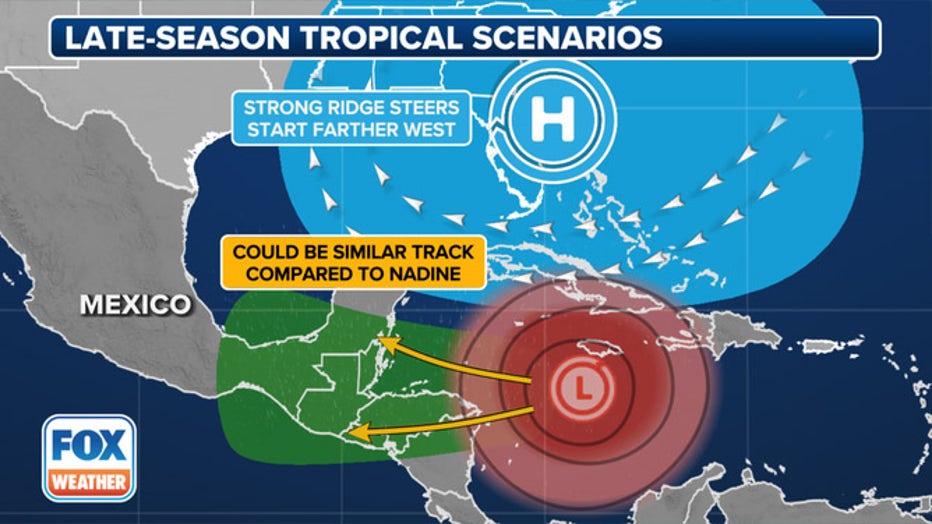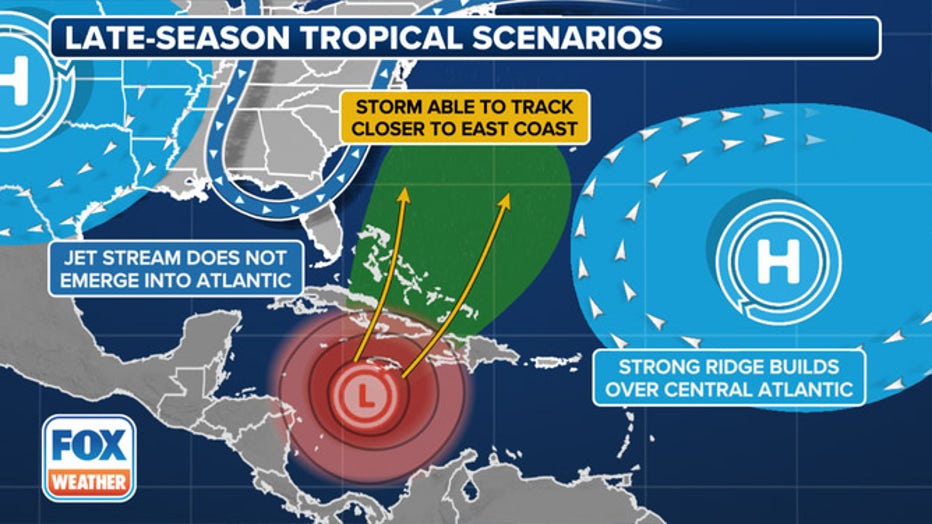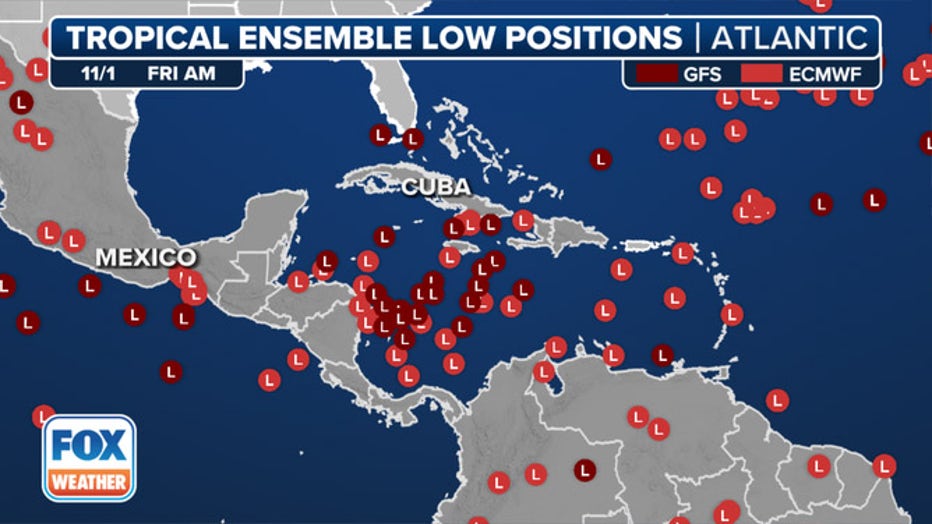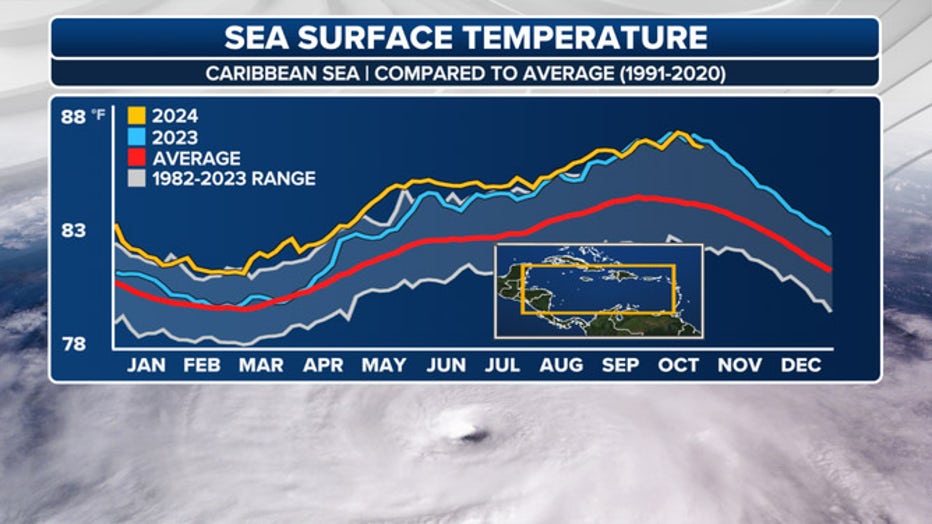With Hurricane Oscar officially becoming a tropical cyclone on Tuesday, the Atlantic basin is currently clear of any tropical changes, and the National Hurricane Center says no further tropical changes are expected over the next seven days.
But don’t let your guard down in the tropics just yet, as there are signs that the break may be short.
Currently, the atmospheric system over the Caribbean and Gulf of Mexico is characterized by a lot of falling air Mexicowhich inhibits tropical development. However, long-term prospects Madden-Julian oscillation — a global pattern in which areas of rising and sinking air alternate every 30 to 90 days — suggests rising air will return to the Caribbean in late October and early November.
It would coincide with the time back Central American vortex — which had a hand in creating hurricanes Helena AND Miltonand most recently Tropical Storm Nadine.
WHAT IS THE CENTRAL AMERICAN VIRUS?
“Right now, towards the end of the month, we’re seeing low pressure starting to form eerily similar to the Central America Vortex,” says FOX Weather meteorologist Steve Bender. “But this one is in the heart of the Caribbean. So we have all this tropical moisture that can be used.”

The combination of these conditions would provide a favorable tropical development somewhere in the Caribbean, and if a storm were to form, there would be three main scenarios, depending on the surrounding atmospheric control patterns we would predict at this time of year.
In most cases, these cyclones do not pose a threat to the Lower 48, but occasionally a storm system can move in from the deep tropics and hit Florida or deliver a devastating blow to the East Coast.
Tropical formation Scenario 1: High pressure acts as a barricade for the United States

The first option would be to maintain strong high pressure over the southeastern United States, acting as a barricade to protect American coastlines.
This pattern would mimic what had just happened Tropical Storm Nadine and would drive any tropical cyclone westward into Central America and perhaps back into the eastern Pacific.
Tropical Formation Scenario 2: Following in Oscar’s footsteps

In this configuration, the blocking ridge of high pressure would be centered farther west over the Deep South Texas – still protecting the US from anything tropical stormsbut allowing the jet stream to descend across the Atlantic.
This scenario would push tropical cyclones eastward across Cuba and Cuba Greater Antilleswhere he eventually imitated Hurricane Oscar interacting with the jet stream and becoming a post-tropical system as it is pushed out into the open Atlantic.
Tropical Formation Scenario 3: The US East Coast is at greater risk

This scenario would be the most worrisome for the United States. In this case, the ridge forms too far west over the US to provide a significant block, while a strong ridge of high pressure forms in the mid-Atlantic.
“We’re looking at two high pressures that are kind of moving (any storms) along the East Coast,” Bender said. “As you track it, you can start to see those areas that have already felt a huge impact” from Hurricane Helene.
Long-range forecast models begin to see some signs of tropical development in the southern Caribbean around October 29, with even more signs of development following a few days later.

“My concern is the first day of November… we’re looking far into the future… and there’s going to be a lot of volatility at that point,” Bender said. “Climatologically speaking, this is where we typically expect to see these forms… but there’s a lot of potential activity ahead.”
The waters of the Gulf of Mexico have finally cooled
There’s some good news from the tropics in the Gulf of Mexico this week.
For the first time in more than a year, average water temperatures in the Gulf dropped below average thanks to a combination of cold fronts, sustained winds and the stormy effects of Hurricanes Milton and Helene.

The last time temperatures averaged was in June 2023. However, they are currently still averaging around 81 degrees – still warm enough for tropical development.
Water temperatures in the Caribbean remain near record levels, reaching into the mid-80s.

Hurricane season officially lasts until November 30
During the last weeks of October and November in an average season, an additional two named storms form, one of which becomes a major hurricane.
TO COMBINE: LEARN MORE ABOUT THIS STORY ON FOXWEATHER.COM
Leave a Reply